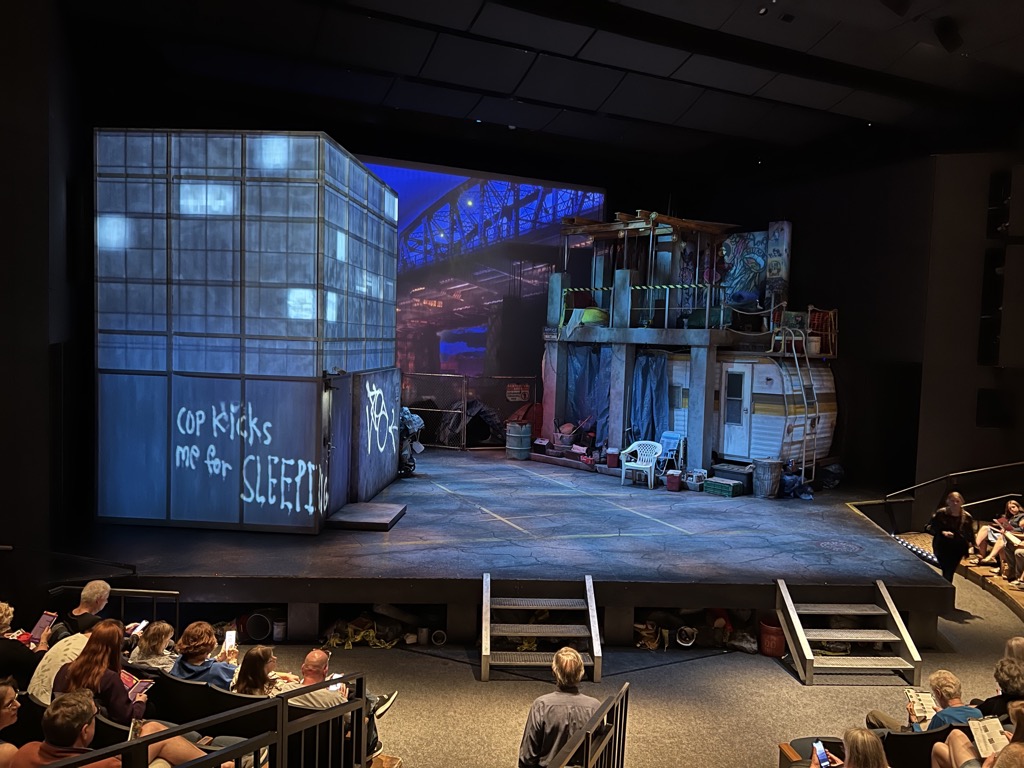Tyrone’s guest for today’s “Theatre Reflection” was the Nurse from last night’s performance of Romeo and Juliet, Caroline Shaffer. The discussion stayed pretty close to last night’s performance, and one of the first subjects raised (well, I asked the question) was the one I wrote about last night: why didn’t Friar Lawrence (Tyrone) tell Romeo about Juliet’s plan?
The answer: the Friar does try to text Romeo, but the text doesn’t go through. The original plan was to project an image of a “message failed” error on the back wall so the audience would know what happened, but they never were able to get it to work; instead, they added a line that the Friar says to let the audience know about the failed message. Clearly, that line didn’t register with me (or with any of the other people in the group who commented on the issue)!
Other interesting topics that came up included safety (there was a lot of climbing onto the top of a trailer using a rather flimsy ladder), the process of getting the script down to a playable time (3 hours versus the four-plus that their first run-through took), the difficulty of synching closed caption devices to the actual dialog, and mentoring younger actors.
And that was it for this year’s Road Scholar program at OSF.
We had an easy drive home – no significant traffic or slowdowns. We had planned to eat at Yaks in Dunsmuir, but it was incredibly crowded and noisy, so we left and had a very pleasant lunch at Dunsmuir Brewery Works, just a mile away.
We stopped in Redding for gas (it was cheaper than it was in Oregon, much to my surprise) and dessert at Dutch Bros Coffee. We’d been collecting stamps on their loyalty card for years (we only visit them on the way to or from Oregon), and today was the day we were finally going to cash in – except that they’d discontinued the card to go contactless during the pandemic, and we were well past the grace period for the cards. Oh, well – one less item on my packing checklist!

